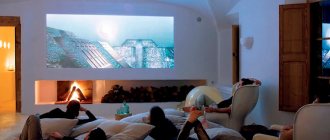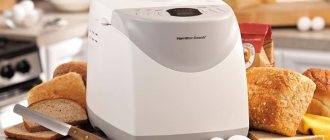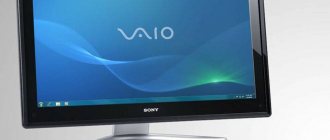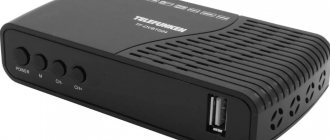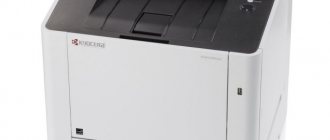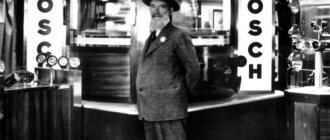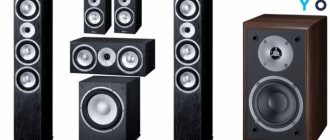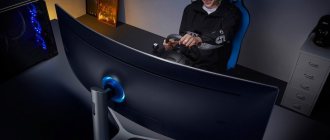Playing musical instruments helps you relax, take a break from the daily routine, and engage in creativity by selecting and processing your favorite melodies to suit your taste. A synthesizer is exactly what is best suited for this. Compact and lightweight, it will not take up much space in the apartment, and will sound no worse than a piano or guitar. Its appearance will decorate any interior. It will be useful for children studying at a music school, professional musicians and simply creative individuals who want to try themselves as a DJ or arranger.
Criterias of choice
To buy the right synthesizer for a beginner, you can’t focus only on cost. First of all, you need to study the main characteristics.
Number of keys. The number of octaves and range depend on this parameter. The keys can be:
- 88 - 7 octaves, like a regular piano;
- 76 - 6 octaves;
- 61 - 5 octaves, such models are very common.
The greatest possibilities are provided by instruments with 88 keys. If you want to play complex pieces of music, then the number of keys should be maximum.
Key type. The variety is represented by two types of keys:
- mechanical, or unweighted - the volume and tone of the sound do not depend on the force of pressing;
- dynamic or weighted - the keys are sensitive to pressure.
For serious work, it is better to choose a dynamic weighted keyboard.
Auto accompaniment. The best amateur models are equipped with automatic accompaniment. If you enable this function when playing, the sound of the synthesizer will be complemented by the bass of the guitar, drums, and wind instruments. The number of accompaniment styles can range from 30 to 200.
Voices. The synthesizer can simulate playing not only the piano, but also other instruments - guitar, violin, drums. Amateur models usually have about 200-300 options, while the best professional models have up to 700.
Effects. In addition to accompaniment, the synthesizer can offer built-in chorus, reverb, and so on to add richness to the sound.
The simplest models provide only 3-10 effects, while the best devices have 50 or more.
Synthesizers for beginning musicians
Medeli M17
This device is an improved version of the M15 model. This synthesizer was released into wide sales only a couple of years ago, but due to its excellent price-quality ratio it was able to instantly gain popularity among ordinary users. The developers of this model placed additional emphasis on making the sound as perfect as possible. Here all timbres are heard realistically and clearly. This was achieved largely due to the installation of a more modern tone generator and improvement of the effects professor. These changes make this instrument suitable not only for teaching or home use, but also for performing in small venues. The polyphony here is 64-note, which allows you to get high-quality sound for each of the built-in tones. In addition to them, the synthesizer has one hundred automatic accompaniment styles.
More: Top 10 best figure skates, how to choose skates for figure skating?!
The keys have also undergone some changes compared to the older model. They are quite responsive in terms of pressing, which provides greater brightness and expressiveness of the melody. The built-in mixer allows you not only to customize the individual sound of each instrument, but also to save the entered data into the synthesizer’s memory. As users note, this model is a small musical laboratory that allows you to carry out various experiments with rhythms, effects and achieve completely different sounds of the same composition. For beginners, the developers have provided 110 educational melodies. The front panel has a liquid crystal display that facilitates operation of the device.
Advantages:
- The keys here are full-size;
- Acceptable overall dimensions;
- High-quality sound;
- Good acoustics;
- Light weight;
- Reliable assembly.
Flaws:
- Some keys may begin to creak after a certain time;
- The sound range is only 5 octaves - many users note that it would be better if there were 7.
Medeli M17
CASIO CTK-7200
Manufacturers have managed to pack a colossal amount of capabilities and a huge range of functions into this model. As people who have used such a device say, it combines both the synthesizer itself and an almost full-fledged arranger and workstation. In shape and overall dimensions, the keys here are no different from the keys of a piano, which allows people who have graduated from music school to use these instruments. They will not experience discomfort due to small keys, which is often the problem with many synthesizers. There are also a variety of useful features that make creating music quick and easy.
The synthesizer has over three hundred musical presets that perfectly connect voice and rhythm, regardless of the chosen style of music. The sound quality is also excellent - each selected instrument will sound like an acoustic one, and you can slightly change its parameters depending on your needs. One of the most interesting features is Audio Recorder: thanks to it, you can record from any external source, and the file will be saved on an external USB drive. The synthesizer has two audio inputs at once; it is possible to apply one of the many available effects to the instrument input.
Advantages:
- Reasonable cost;
- It is possible to record almost professional phonograms;
- You can record music and voice at the same time.
Flaws:
- Some keys begin to creak after a certain time - this does not affect the quality of the recording, but it can cause some discomfort for the musician.
CASIO CTK-7200
CASIO CTK-6200
This is one of the most compact semi-professional models from this manufacturer, which quickly gained popularity among users. The range of functions and useful qualities of this device is quite wide, so many people are surprised why so many features are provided for such a low price. The overall dimensions are small, although the keyboard here is full-size - it includes 61 dynamic keys. If necessary, you can select the most suitable sensitivity level, allowing you to use a wide variety of musical styles. If the user has some experience using such equipment, the sensitivity mode can be turned off completely, which allows the synthesizer to be used as a midi controller.
The internal capabilities are very rich: the range of possibilities has been expanded almost to a professional level, largely due to the presence of seven hundred built-in tones. There is an editor that allows you to create your own musical voices by layering. One-time polyphony includes 48 notes. In addition, the synthesizer has hundreds of preset effects, the same number of customizable ones, and there are ten types of reverb. The synthesizer's memory is extensive - it is designed for 5 compositions, each of which can contain up to 17 melodies, which in total amounts to over 12 thousand notes. There are slots for SD or SDHC memory cards, the capacity of which can reach 32 GB. Another very interesting feature is the “Music Presets”, which are a built-in library with about 300 different songs.
Advantages:
- High quality of tool manufacturing;
- Wide range of tools;
- Ease of use;
- Good value for money, and the quality is even significantly higher compared to the cost.
Flaws:
- There may be some learning problems.
CASIO CTK-6200
Which brand of synthesizer is better?
Several manufacturers are the most famous.
- Yamaha, specializing in the creation of musical instruments since 1887;
- Korg, on the market since the 1960s, is respected by musicians;
- Roland - synthesizers combine quality, compactness and reasonable cost;
- Casio is a well-known manufacturer of budget models.
Most of the best synthesizer manufacturers on the music market are represented by Japanese companies.
The best budget synthesizers under 10,000 rubles
CASIO CT-S100
This instrument, produced by a world famous brand, will be a worthy gift for any musician, especially for a beginner. The model promotes good learning, as well as the first familiarization with notes and octaves. Mixed power: you can use 6 AA batteries or connect a regular power cord to the connector. Autonomous recharging is useful on long trips or on tour performances. The upper part of the case has a durable handle for conveniently carrying the tool, and its compact dimensions and standard black style will add zest to any interior design.
Advantages
- Power supply is possible from the mains and batteries
- large selection of tones and octaves
- full size keys
- compact size
- low cost
Flaws
- Since the model is semi-professional, it is not suitable for in-depth study of music
- no pedal input
- short power cord
Tesler KB-6190
This tool attracts attention primarily due to its price - and for some, this parameter will become critical. The price of the synthesizer is such that it couldn’t be more affordable. The functionality here is limited - there are no connectors for pedals (but there is USB), and there are only 200 built-in tones. In the best Chinese traditions, the manufacturer is trying to attract attention with “component” acoustics - next to both speakers you can see “tweeters” and even bass reflex holes. To be honest, it’s hard to say what spoils the sound more – the acoustics or the synthesizer itself; a good amplifier and acoustics somewhat correct the situation. The training mode is common for inexpensive synthesizers, using built-in melodies with prompts on the display. It reads well enough that the “tutorial” here is usable and not added for show. The keyboard is traditional unweighted. Compared to more expensive instruments, it is frankly unpleasant due to its plasticity, but here it is worth remembering again the price of the synthesizer. He fully justifies it.
Advantages
- Extremely affordable price
- It’s not a pity to put it on the mezzanine if the passion to learn how to play disappears
Flaws
- Flat, unnatural sound
- Frankly cheap keyboard
CASIO SA-77
One of the simplest, inexpensive synthesizers, designed to teach beginning musicians the basics of musical notation. It has a rectangular shape with rounded sides, light weight (1.54 kg), and medium dimensions (60.4 x 5.7 x 21.1 cm), making it easy to carry to the right place. It is equipped with 44 small-sized, unweighted keys providing 3.5 octaves of sound, two small speakers of 0.8 W each, and a headphone jack. It operates from the mains, connects to it via a power supply, which is not included in the basic kit, or can operate from a battery. It is easy to use, thanks to the convenient location of all the elements that influence the creation/playing of melodies. There is a small two-line backlit display that shows the main functional parameters when you select them, 8-voice polyphony, 100 built-in tones, about 50 songs to learn, 50 different styles, 5 small drum simulators, on/off/transition buttons from piano to organ, as well as the option to turn off the music.
Advantages
- Low price
- Intuitive controls
- Availability of training function
- Informative LCD screen
- There is a hole for connecting headphones
Flaws
- No power supply included
- Small number of tones
CASIO SA-78
This is a fairly high-quality synthesizer, despite the fact that it was originally created specifically for children. First of all, the manufacturers took good care of children's safety. The speakers are protected in such a way that a child cannot reach them in any way. The body is made of high quality matte plastic. The buttons are all made of soft rubber with a sensitive touch. The keys are made of glossy plastic, a little easily soiled, but this is not critical. There are 44 of them here. The synthesizer runs either on batteries or on a special 9.5 V 1 A adapter, which is connected to a special connector located next to the headphone jack. If necessary, you can connect external speakers, which can significantly improve the sound quality of the device. The weight of the device is small - together with six batteries it barely reaches one and a half kilograms. The case has very convenient recesses for carrying it. Even a three-year-old child can easily carry it from place to place without straining himself. At the same time, the device has five additional buttons responsible for the percussion instrument mode, and there are tempo and volume controls. The central part of the device has a monochronous liquid crystal display. It displays a metronome indicating rhythm, staff and other useful information. In addition, there is a large yellow button that switches between piano and organ modes. If the synthesizer is turned on without use for five minutes, it will automatically turn off.
Advantages
- Small overall dimensions and weight of the device
- Quite acceptable sound quality
- Works both from mains and batteries
- Can also be used by adults
Flaws
- Not detected
CASIO SA-47
The design has 32 small keys, which are well suited for children's fingers, but in terms of sound quality, this synthesizer is quite good. Its sound range includes 100 timbres, 50 different musical styles, and 8-note polyphony. In addition, the instrument has 5 buttons responsible for drums, a reed organ mode and a piano mode with a switching function. Due to its compact dimensions, this synthesizer is ideal for young musicians. The weight of the device is small, the keys have a soft stroke, which allows the baby to play on it for a long time, and the fingers will not feel tired. The main thing is to place the synthesizer on a flat surface before turning it on; it will not slide on it due to the presence of rubberized feet. The design is made in retro style. The case is made of high-quality silver plastic with a matte finish, on which dust, fingerprints and other types of contamination will not be visible. There are also reliable and fairly powerful speakers that provide good quality sounds. It is worth noting that the synthesizer is equipped with a liquid crystal display on which you can read all the information necessary for the user. The device has a training mode: it includes 10 melodies that the baby is asked to repeat. If necessary, you can connect headphones.
Advantages
- Superior sound quality
- Small overall dimensions
- Provides an informative LCD display
- High quality build
- The weight is quite suitable for a small child
- Operates on batteries or accumulators, can be powered from the mains
Flaws
- Some users feel that the speakers sound quiet
Synthesizer for teaching a child
Until you know how seriously your child is interested in immersing himself in the musical world, you should choose inexpensive models up to 7-8 thousand rubles. They are quite suitable for mastering the basics of musical literacy and are able to develop a sense of rhythm and a sense of musical harmony.
Advice. Professionals recommend that children aged 5 years and older purchase a panel with keys of standard rather than reduced sizes. This will help you immediately get used to the correct hand position, and you won’t need to relearn it later.
If you are planning an original, educational gift for a birthday, then models from Casio are suitable for children from 2 to 5 years old. They are properly tuned and promote hearing development, and feature smaller keys. These types of synthesizers do not have a tutorial function, so parents should be prepared to show their kids a few simple tunes.
Best Budget Synthesizers for Learning
YAMAHA PSR-E363
A stylish synthesizer with a full-size semi-weighted keyboard that is sensitive to the pressure of each of the 61 keys. With its impressive dimensions (94.5 x 11.8 x 36.8 cm), it weighs 4.6 kg, which is several times less than most professional devices. The built-in program for teaching the basics (Keys to Success) was developed with the participation of the best music teachers. It is based on a special technique that allows you to learn melodies step by step, following certain instructions/recommendations. The presence of a useful option to split the keyboard into 2 makes it possible to play any melody in 2 hands, recreating the sounds of various instruments. Metronome, polyphony for 48 voices, 574 timbres, 165 styles/tracks make this technique universal and multifunctional. The Melody Supressor function allows you to accompany yourself by connecting an external audio player. You can choose any power supply: either an adapter or batteries.
Advantages
- Pressure sensitive keyboard
- Well thought out training program
- A large number of tones
- Multifunctionality
Flaws
- Large size and weight
- No sound amplifier included
CASIO LK-S250
A rectangular device with rounded corners, a built-in handle for easy transportation, and backlit all dynamic keys, used both at home for training and at outdoor events for creating musical accompaniment. Controlling the synthesizer is the simplest and most intuitive. There is an informative, backlit LCD display. About 400 different tones, 77 rhythms, a reverberation effect including 10 types, 48-note polyphony, 60 built-in melodies, as well as oval speakers of 2 W each are responsible for the sound quality. There are microphone/headphone jacks.
Advantages
- The set includes a music stand and power supply
- Display, backlit keys
- Easy to use
- High quality build and components
- An easy-to-carry handle located at the top of the body
Flaws
- No built-in memory for saving tunes
Medeli M311
The Chinese synthesizer will offer 320 built-in sounds, a not-so-bad training program, and the ability to connect to a PC via a USB connector—the synthesizer can also work as a MIDI keyboard. What will you have to pay for this? For starters, frankly weak acoustics, and we are talking not only about the speakers, but about the sound path as a whole. You can feel the upper octaves being cut back, and there is a noticeable resonance at the bottom of the midrange. The keyboard is a traditional 61-key, unweighted, touch sensitive, but overly light and does not provide adequate feedback. On the other hand, remember the price. Medelli makes it possible to inexpensively start mastering both the keyboard instrument itself and working with a DAW on a computer - and high-quality VSTs in combination with a decent sound card will allow you to get sound that is an order of magnitude better than the “built-in” one. This means that the time of “growing up” can be extended.
Advantages
- MIDI mode
- A good set of tones and accompaniments
- Fairly clear tutorial
Flaws
- Sound quality “for the money”
YAMAHA PSR-F51
A portable synthesizer for beginners from a famous brand, made in a traditional black color. It can be used to create music at home or on the street, thanks to the fact that it operates not only from an adapter, but also from AA batteries. Its weight is 3.4 kg, given its considerable dimensions - 94x10.9x30.6 cm. It has a standard rectangular shape with full-size unweighted keys located on the top panel. Their number reaches 61 pieces. There is a sound amplifier, two speakers with a total power of 5 W, a hole for connecting headphones – 3.5 mm jack. A special feature of this model is the ability to divide the keyboard into two independent parts for paired performance of compositions. The polyphony is quite extensive - 32 voices, it is possible to select instruments (a total of 120 are programmed in the equipment), genres (any of 114). All these parameters allow you not only to play your favorite melodies, but to create your own, unusual in sound and processing. The keyboard learning mode is activated using the built-in metronome.
Advantages
- Comes with a music stand
- Suitable not only for beginners, but also for intermediate level performers
- Compliance with price and quality
- Powered by adapter or rechargeable batteries/AA batteries
- There is a Duo option to split the keyboard into 2 independent ones
Flaws
- There is no way to record created melodies
- Markable surface
Rating of the best synthesizers for beginners
| Nomination | Place | Name | Price |
| Best Budget Synthesizers for Beginners | 1 | Tesler KB-6190 | 10 000 ₽ |
| 2 | CASIO CT-S100 | 9 500 ₽ | |
| 3 | Tesler KB-6130 | 4 350 ₽ | |
| 4 | Yamaha PSR-F51 | 10 200 ₽ | |
| The best synthesizers for beginners in terms of price-quality ratio | 1 | CASIO CT-X5000 | 37 000 ₽ |
| 2 | Yamaha PSR-E363 | 21 000 ₽ | |
| 3 | KORG EK-50 | 34 000 ₽ | |
| 4 | CASIO WK-6600 | 39 000 ₽ | |
| 5 | CASIO LK-S250 | 20 000 ₽ | |
| 6 | Roland GO:KEYS GO-61K | 24 000 ₽ |
The Best Budget Synthesizers for Hobbyists
Casio CT-X5000
According to buyers, this model has good sound quality; the piano parts are comparable to the sound of a digital piano.
The functionality will appeal to beginners and professionals alike. A fairly powerful built-in acoustic system makes this instrument suitable for use at home, studio work and solo performances. Specifications:
Keyboard Features: Unweighted, 61 full-size keys, no hammer action. Sensitive to touch. With division;
Design features: the model is compact in size, equipped with built-in acoustics with a 2x15 W amplifier, and an informative display. The pitch of the tones is adjusted by the controller. It is possible to connect pedals.
Dimensions: 940x 306x109;
Tool weight: 7.0 kg;
Functionality: 800 tones, 64 polyphonic sounds, auto accompaniment for 235 styles, 168 effects, transposition. There is a metronome and reverb function. Ability to record up to 10 songs;
Additional equipment: there is a headphone jack, USB connectors.
Advantages
- great sound
- large selection of high-quality recorded tones and styles
- five-octave keyboard with full-size keys
- split keyboard and transpose
Flaws
- The controls are complicated, you can't figure it out without instructions
Roland BK-3
This model can be used both for home concerts and for performances on a professional stage. The keyboard responds very clearly to soft and sensitive touches, helping the instrument produce high-quality sound at different frequencies: from low to high. The diversity of the timbre palette makes it possible to perform on the synthesizer a wide variety of musical works belonging to various genres: from rock and jazz, to classical and ethnic. For the selected styles, you can choose one of 4 accompaniment options and multi-effects. The device is equipped with a player, karaoke function and a flash card containing audio files. Such a variety of applications provides many opportunities for exchanging files with mobile devices.
Advantages
- presence of an acoustic system
- built-in “musical assistant” mode
- selection from 500 songs
- karaoke function
- you can connect gadgets
Flaws
- no sequencer
- complex settings
- no separate audio output provided
CASIO WK-6600
This synthesizer has an increased width, which accommodates not only its 76 keys, but also component acoustics. For the latter, you should purchase an amplifier. The instrument has a built-in library with 700 tones and 100 effects. They are supplemented by the same number of effects that can be downloaded additionally. The Pitch Bend wheel helps you create sonic variations up to 12 semitones. If you connect a microphone to this device, you can safely go to a corporate event. When performing in a “truncated” lineup or rehearsing, the ability to quickly call up rhythmic patterns and quickly move through them using an encoder will be useful. In this case, the keyboard is virtually divided into 2 different instruments so that their sounds can be mixed together. The disadvantage of the tool is the quality of the keyboard, which is not as pleasant to the touch as it might seem at first glance, but we believe that this was done in order to reduce the cost of the product. Remembering that this synthesizer is suitable for performing and making money, you can forgive it for this flaw.
Advantages
- good sound production
- rich set of tones and effects
- simple and convenient control
Flaws
- not detected
YAMAHA PSR-E463
Yamaha is positioning this model as a synthesizer for beginners, but this does not mean a reduction in functionality - on the contrary, it has added features that an experienced musician is unlikely to need. For example, there is a Quick Sampling function here - you can connect a smartphone or player via the AUX input and take samples directly from it. For a novice musician who has not yet mastered working with sound on a computer, this opportunity to quickly “make a sound like this track” will definitely come in handy. Although the PSR-E463 has enough standard capabilities: 758 timbres, 235 types of accompaniment, 12 types of reverberation, et cetera, et cetera. Using Groove Creator, you can temporarily retrain from a keyboard player into a DJ: set up the rhythm, time signature and start mixing. The USB port allows you to record your game using a PC or smartphone, and can also save WAV to a flash drive. Of course, the audio is digitized at 44.1 kHz/16 bits, which immediately sounds like an amateur instrument - but is more required for learning? The dimensions of the synthesizer are large, but for a reason - it has enough controls. 61 unweighted keys with four touch sensitivity settings are standard for this class. Built-in acoustics - two 6-watt speakers, and they sound nice for this price. But the “tutorials” here have been thoroughly cut down even in comparison with the “younger” Yamaha models, and even more so with Casio, where the training programs can safely be considered the best implemented. Is it good or bad? Let’s put it this way – although, of course, it will be more difficult to master a synthesizer “from scratch,” but it will take longer to “grow” out of it. Therefore, perhaps, we will give our gratitude to the developers with additional points in the rating of the best synthesizers: the model turned out to be interesting and provides good opportunities for development.
Advantages
- Sound quality
- Rich sound customization options
- Easy live sampling
Flaws
- Noisy keys
Novation Launchkey 61
61 full-size keys with excellent touch sensitivity plus 16 pads that also have pressure and velocity sensors - this in itself perfectly characterizes the instrument. Application for professional use and included software - the entire package is designed to work under MacOS, which is de facto recognized as the standard for professional work with music. It is enough to “hang” on the pads the activation of clips and tracks in the sequencer (by the way, their backlighting is flexibly adjusted, serving as a kind of reminder of the purpose of a particular pad), and on the MIDI input of the computer – the desired VST instrument, and you can fully appreciate the functionality of this keyboard . Right there at your fingertips are convenient analogue controls. In short, the purchase of this keyboard can be considered a success both for home use and for a small studio. It's worth the money.
Advantages
- Functionality
- Rich package of included software
Flaws
- Unweighted keys are an acquired taste
The best synthesizers for beginners in terms of price-quality ratio
CASIO CT-X5000
Rating: 4.8
One of the most expensive synthesizers in our selection. He is perhaps the largest. However, the tool still belongs to a compact form factor, so placing it somewhere in the house is not a problem. And the weight, not exceeding 7 kg, even allows you to take the CASIO CT-X5000 to any performance.
Unlike its cheaper counterparts, it uses a semi-weighted keyboard. It is also worth noting the sensitivity of the keys to touch. In short, your sensations will be as close as possible to those you get when playing a grand piano. All keys, of course, are full-size. This is also an undoubted advantage.
Most of the top panel of the instrument is occupied by all sorts of buttons, pads and display. With their help, you can quickly switch between sound modes, as well as activate additional functions. For example, you can use a metronome to help you achieve the desired rhythm. You will also have access to recorded music. There is also an arpeggiator here, just as transpotation has not been forgotten. There was also room on the synthesizer for impressive speakers, the total power of which is 15 W. You can even give concerts with them in some small halls.
What else can a synthesizer please you with? First of all, it is necessary to note the 800 timbres. This number will suit even some professional musicians. There are also 235 auto accompaniment styles and 168 effects available. And don't forget that you can add other styles to this synthesizer using your computer. 64-voice polyphony is responsible for the sound here.
If we talk about connectors, there is no shortage of them. There is USB Type A, which is needed to connect an external drive. Lurking nearby is USB Type B, usually used for synchronizing with a PC. One linear input and one output may also come in handy. There is also a headphone jack, which is necessary for moments when you might disturb your game. Finally, the microphone input is not forgotten. By the way, there are 4 separate pads on the body, which are used to play phrases you have previously recorded.
The CASIO CT-X5000 is one of the few models in our selection that is not capable of running on batteries or a rechargeable battery. It must be connected to the electrical network. This is due to the excessively high power of the speaker system used here.
Advantages
- It is possible to connect pedals;
- Available for use with a microphone;
- A large number of connectors;
- Built-in powerful acoustics;
- The keys are touch sensitive;
- A very large number of timbres and styles;
- Excellent polyphony;
- The keyboard is at least semi-weighted.
Flaws
- Autonomous operation is not possible;
- There is no built-in training mode;
- Very high cost.
Adviсe
A synthesizer is an instrument with which you can create unique musical compositions. When choosing a synthesizer, it is recommended to consider the following points:
- key size. There are models with micro, mini and standard key sizes. It is better to give preference to the latter option even for learning the game;
- number of keys. Their number is chosen depending on the purpose of using the tool. For beginners, it is best to use a model with a small number of keys. Professionals can use either option;
- polyphony. It is best to use tools with a score greater than 32 points;
- number of timbres, styles. The more of them, the more capabilities of the tool, but the higher its cost;
- presence of a training mode. It is needed if the user is just learning to play the synthesizer
Professional synthesizers
Roland FA-06
It has a plastic case, due to which this device does not weigh too much for professional equipment - only 5.7 kg. For an instrument with 61 keys, the overall dimensions are also small - 100x30x10 cm. All connectors for connecting additional devices, including the power cable, are located on the rear panel. The product is equipped with anti-slip rubber feet. The connector for the power supply is additionally reinforced with a rubberized ring, thanks to which the plug is fixed as tightly as possible. Near it there is a special jumper that allows you to secure the cable and protect it from accidental jerks. There is a line output for using a connection in stereo format with the ability to balance channels.
More: Top 10 column fans
The keys have a short stroke and quickly return to their original position. They are a real pleasure to play, although they will take some time to adapt to. The interface of the synthesizer is quite simple, so you can start working with it without studying the instructions. All main functions have separate buttons and controls. The synthesizer boots up very quickly after switching on - about 10 seconds is enough. A large full-color LCD display is located in the center. Although it is quite informative, it will not show unnecessary data. All sounds produced are sorted into sections.
Advantages:
- High speed;
- Large color display;
- Possibility of connecting a stereo system;
- Ease of use.
Flaws:
- The key travel is short - you have to get used to it.
Roland FA-06
Synthesizer Yamaha PSR-SX700
The device offers the user literally perfect sound, a wide range of different instruments and increased functionality. Compared to the previous generation of professional synthesizers, the device has an improved design, a keyboard of the highest quality, and an optimized FX section. The latter includes a set of equalizers, compressors, reverbs and many other effects. The synthesizer supports polyphony of 128 voices and has an AWM tone generator. There is an organ-type keyboard installed here, consisting of 61 keys, FSB format. The response can be adjusted. The acoustic system is represented by two speakers, the power of each of which is 15 W. For ease of control of functions, there is a touch-type display, the diagonal of which is 7 inches, there is also a joystick, many buttons, three regulators and an encoder.
If necessary, the keyboard can be divided into four independent zones, with specific instruments assigned to each of them. Buttons are usually used to work with settings and effects. The library consists of 1027 presets consisting of keys, percussion organs and so on, as many as 400 rhythmic patterns are provided for accompaniment. Among the connectors there are inputs for connecting a guitar, a microphone, the built-in memory capacity is 400 MB, there are also two USB connectors, and the same number of outputs for pedals. The weight of the device is quite serious - 12 kg.
Advantages:
- Quite loud sound;
- Wide range of possibilities;
- All necessary additional connectors are available;
- Excellent workmanship of the instrument;
- Reasonable price for a professional synthesizer.
Flaws:
- Not detected.
Yamaha PSR SX700 Demo
Synthesizer Yamaha PSR-SX700
KORG Pa600
The synthesizer is a fairly powerful professional-type arrangement station, which is very popular among professional musicians. It has an automatic accompaniment function. The keyboard here is unweighted, has 61 keys, and they are sensitive to both speed and pressure. The model is equipped with powerful polyphony of 128 voices. There are even more tones - over 950, and there are also enough accompaniment styles for professional use - more than 360. The drum set includes 64 variations. In the central part of the product there is a fairly large touch-type liquid crystal display, the diagonal of which is 7 inches with a resolution of 800x480 pixels. This allows you to quickly adjust any user settings, make changes to them, save them, and so on.
The equipment memory is designed for 1200 user styles, there is 96 MB of RAM. You can use all the capabilities of this equipment directly during a performance - this is exactly where the touch screen will be useful. The sound quality is very high, so the instrument is suitable even for performances in philharmonic halls or conservatories.
Advantages:
- The kit includes a control pedal;
- A touch display is provided;
- The synthesizer is equipped with a transpose function;
- Has a built-in mid-power speaker system;
- Convenient to use.
Flaws:
- High price.
KORG Pa600

